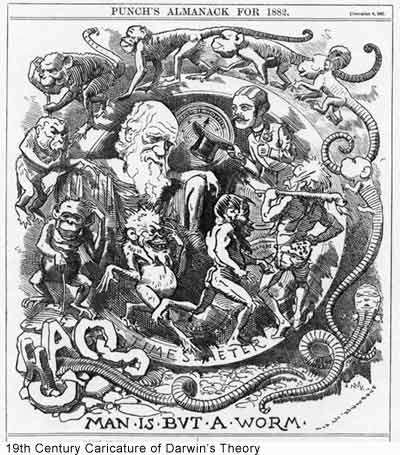|

Evolution of a Theory: By the late 1700s, scientists were discovering fossils in great numbers. The most commonly held view was that fossils were evidence of the bible’s creation story. In fact, it became popular to display fossils in churches as proof of the Great Flood! Johann Jakob Scheuchner, a scholar who had collected fossils from around the world, published a book on natural history based on both Biblical account and his own observations of nature.
 Most 18th century Christian naturalists believed that fossils had to represent currently existing life forms—since all animals are god’s creations, they must be perfect, and had no need to change over time. Most 18th century Christian naturalists believed that fossils had to represent currently existing life forms—since all animals are god’s creations, they must be perfect, and had no need to change over time.
In addition, extinction couldn’t happen, since every animal must be amply equipped for survival in their environment. Many scientists tried to match fossils to living species, or declared that the fossils represented living species that remained undiscovered.
Another Darwin? Despite prevailing connection between religion and science, many philosophers and scientists have come up with ideas resembling evolution. In 1794, Erasmus Darwin (Charles’ grandfather) referenced ideas that resemble evolution and DNA.
Lamarck's Landmark Theory: Also, in 1809, Jean-Baptiste Chevalier de Lamarck published the first testable evolutionary hypothesis.
Darwin on the Scene: In 1859, Charles Darwin published his theories on evolution. He wasn’t the first, but Darwin’s evidence for natural selection was the most extensive, sparking an explosion of controversy.
Theory of Evolution: Darwin ’s Theory of Evolution states that all life is related and is descended from a common ancestor. Birds and bananas, fish and flowers alike are
all related! Over long stretches of time, complex creatures evolve from more simple ancestors. Through a process called natural selection, beneficial genetic mutations are passed on to future generations because they aid survival. Over time, beneficial mutations accumulate, and eventually, a new species evolves!

|
